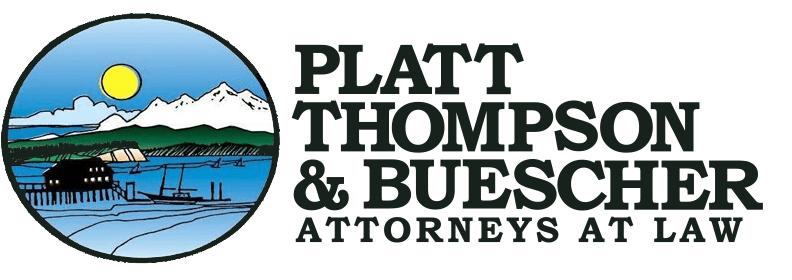Basic Admissibility Requirements for Breath Tests in Seattle, King County, Oak Harbor, Island County, Western Washington:
Major law enforcement campaigns exist to enforce DUI laws. However, with how life altering a DUI conviction can be, it is critical that the driver be treated fairly….as, it is true that some folks have been wrongfully accused before…..
RCW 46.61.506(4) provides the initial threshold foundational elements for admissibility of BrAC results. See City of Fircrest v. Jensen, 158 Wash. 2d 384, 399, 143 P.3d 776, 784 (2006). Satisfaction of these elements does not mandate, but permits evidential breath tests to be admissible. Jensen, 158 Wash.2d at 399, 143 P.3d at 784. Even if the threshold foundational elements of RCW 46.61.506(4) are satisfied–the court may still exercise its discretion to suppress BrAC results. Id. The must establish the following statutory threshold foundation before BrAC results may be admissible in Counts in Seattle, King County, Oak Harbor, Island County, and Western Washington:
1. The analysis was performed according to the methods approved by the state toxicologist. Wash. Rev. Code 46.61.506(3).
2. The individual who performed the analysis of the person’s breath possessed a valid permit issued by the state toxicologist. Wash. Rev. Code 46.61.506(3). WAC 448-16-120 provides that “[o]perators whose authorization expires…are not certified to perform any evidential breath test during that period.” WAC 448-16-120 (“Permit cards.).
3. The instrument must be approved by the state toxicologist. Wash. Rev. Code 46.61.506(4)(a); WAC 448-16-020 (Datamaster, Datamaster CDM, or Drager Alcotest 9510).
4. The person who performed the test was authorized to perform the test by the state toxicologist. Wash. Rev. Code 46.61.506(4)(a)(i); see WAC 448-16-120.
5. A proper fifteen minute observation period occurred prior to the administration of the test. See Wash. Rev. Code 46.61.506(4)(a)(ii); 46.61.506(4)(a)(iii); see also Washington State Patrol Toxicology Laboratory Division Training Manual–Breath Alcohol Calibration, Effective Date 9/10/08 at 28. The 15 minute observation period is triggered after Miranda rights and implied consent warnings are read and the person’s mouth is checked. State Tox. Manual at 30. After the Implied consent warnings are read the Officer signs on “Officer’s Signature” line, has the Defendant sign (or the officer writes “refused to sign”), and the defendant is to mark the YES/NO box. State Tox Manual at 22. A mouth check requires either a physical examination of the mouth or a denial by the person that he or she has any foreign substances in their mouth. WAC 448-16-040. And the exact time from the Datamaster clock is to be recorded. State Tox. Manual at 30-31.
6. The person being tested did not vomit or have ANYTHING to eat, drink, or smoke for at least fifteen minutes prior to the administration of the test. Wash. Rev. Code 46.61.506(4)(a)(ii) (emphasis added).
7. The person being tested must not have ANY foreign substances, not to include dental work, in his or her mouth at the beginning of the fifteen minute observation period. Wash. Rev. Code 46.61.506(4)(a)(iii) (emphasis added). This determination is made by either an examination of the mouth or a denial by the person that he or she has any foreign substances in their mouth. WAC 448-16-040(1).
8. A thermometer approved of by the state toxicologist must be used to measure the temperature of any liquid simulator solution utilized as an external standard. Wash. Rev. Code 46.61.506(4)(a)(iv). Approved thermometers are (a) mercury in glass thermometers with a scale graduated in tenths of a degree measuring between 33.5 and 34.5 degrees centigrade; (b) Digital thermometer system contained within the Guth 2100 wet bath simulator. WAC 448-16-020.
9. Prior to the start of the test the temperature of any liquid simulator solution utilized as an external standard must be measured by an approved thermometer and be thirty-four degree centigrade plus or minus .3 degrees centigrade. Wash. Rev. Code 46.61.506(4)(a)(iv).
10. The internal standard test results in the message “verified.” Wash. Rev. Code 46.61.506(4)(a)(v).
11. The two breath samples must agree to within plus or minus ten percent of their mean according to the formula set forth in WAC 448-16-060. Wash. Rev. Code 46.61.406(4)(a)(vi); WAC 448-16-060.
12. The result of the test of the liquid simulator solution external standard or dry gas external standard must lie between .072 to .088 inclusive. Wash. Rev. Code 46.61.506(4)(a)(vii).
13. All blank tests must give results of .000. Wash. Rev. Code 46.61.506(4)(a)(viii).
If the state satisfies these initial threshold statutory foundational elements–only then the test may be admissible. See Jensen, 158 Wash. 2d at 399, 143 P.3d at 784.
If the state fails to establish these foundational elements the court should suppress the breath test. Thus, it is critical for the lawyer to closely scrutinize whether these elements can be satisfied. Oftentimes, the police reports, breath test tickets, and other materials provided by the prosecutor make it appear that everything was done correctly and that no problems exist. However, further digging, sometimes, can reveal major problems with the breath test.
If you have been charged with a DUI contact Platt & Buescher to set up a consultation.

